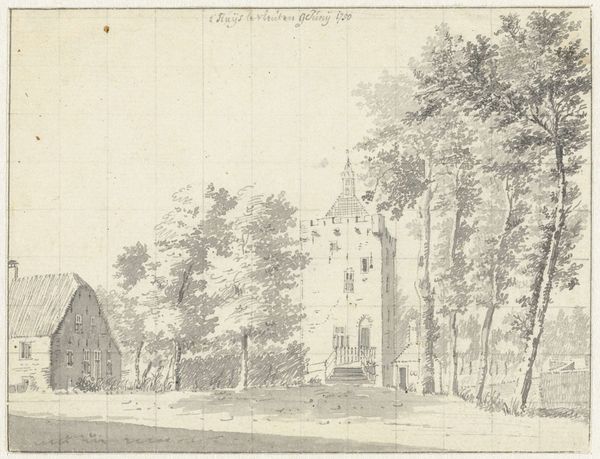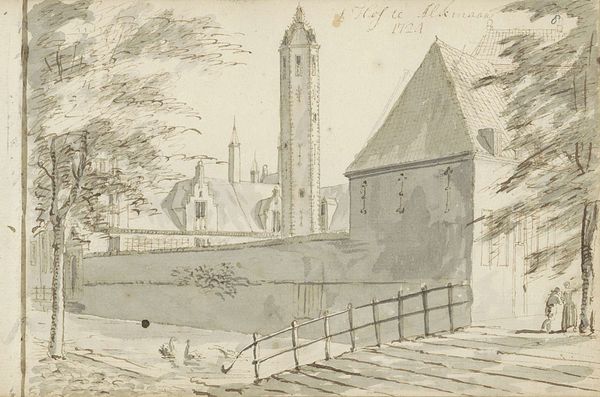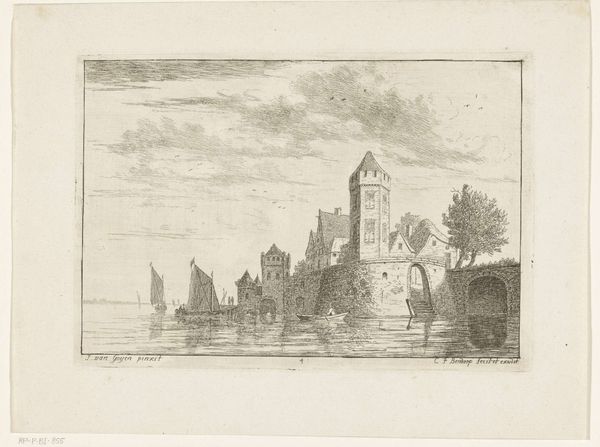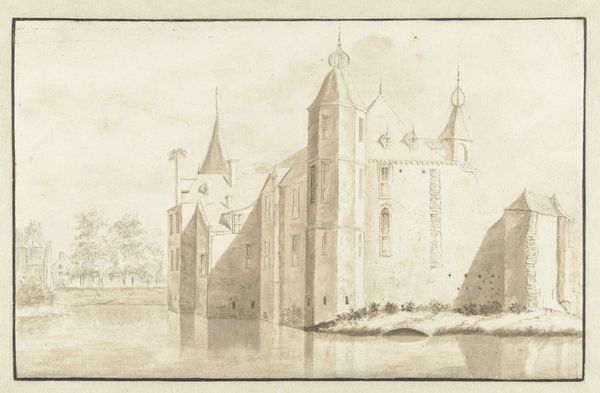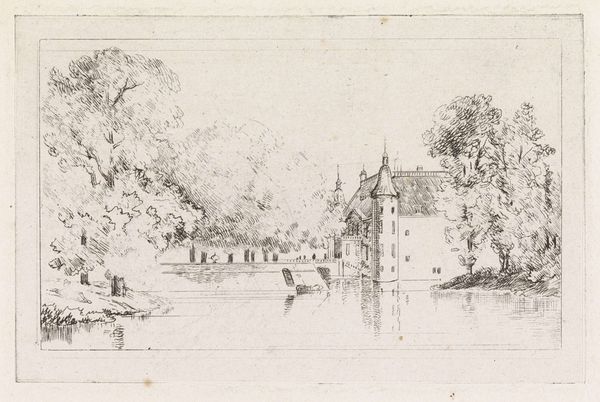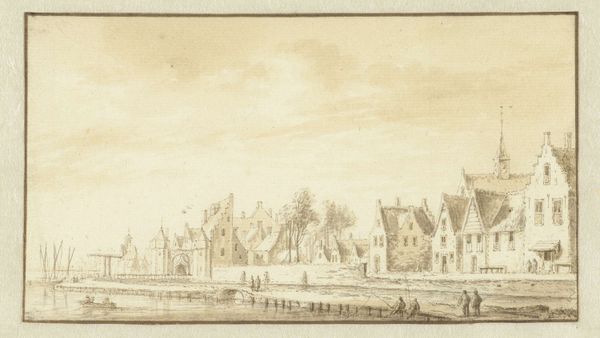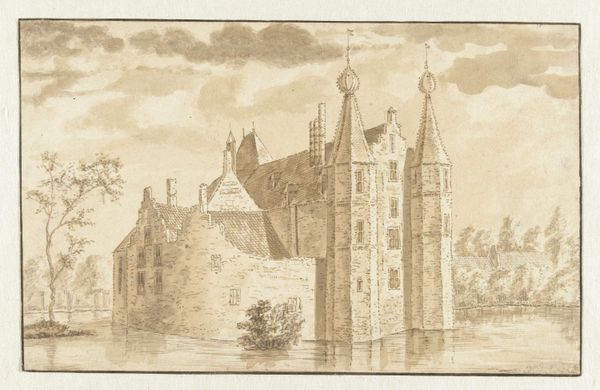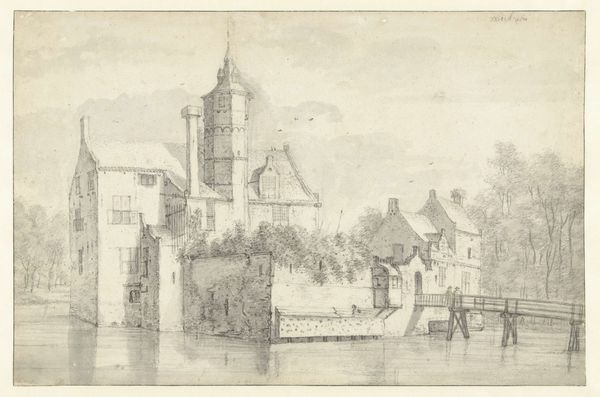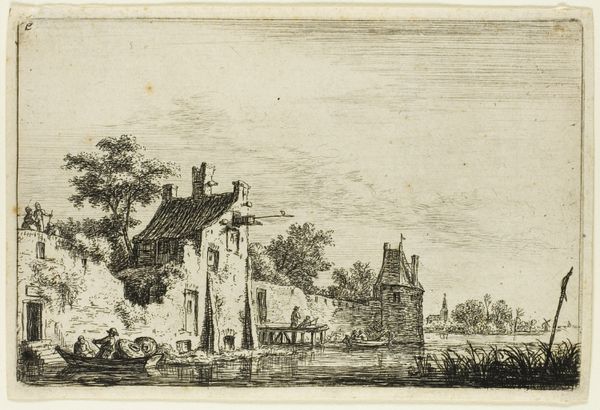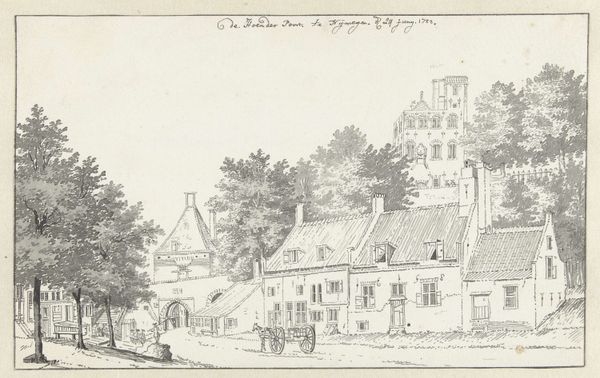
drawing, etching, paper, ink, pencil, architecture
#
drawing
#
baroque
#
etching
#
landscape
#
etching
#
paper
#
ink
#
pencil
#
cityscape
#
architecture
Copyright: Rijks Museum: Open Domain
Curator: Looking at this ink and pencil drawing with etching on paper, what catches your eye first? The work is titled "Huis te Ramp of kasteel Rampenbosch te Bergen" by Abraham Meyling from 1724. Editor: Immediately, it evokes a feeling of somber elegance. The muted tones and delicate lines create a somewhat melancholic atmosphere, don’t you think? The architectural subject looms like a faded memory. Curator: Yes, that melancholy speaks to the weight these buildings carried, often as symbols of power, or at least significant civic presence. Notice the specific details: Meyling captured not only the building’s structure, but also a specific place within Bergen, referencing its role in the city’s larger narrative. Editor: You're right, the attention to the castle grounds reflects pride, doesn't it? I am wondering though, who this Rampenbosch belonged to at the time. And also why Meyling decided to depict it with what seems to me a sentimental view. Was it about to be demolished? I suppose, with buildings in general, they can come to encapsulate certain eras and ideologies. Curator: I like how you picked up on that potentially impending disappearance! Given Meyling's focus on preserving a visual record, the drawing serves as a memorial, imbuing it with further emotional weight. These visual records offered glimpses into specific socio-political milieus of that era, shaping our understanding. Editor: And also think about who these images were designed for. Obviously those commissioners wanted not only to secure power relations but to consolidate or convey those visual codes to future generations. I love to reflect on the afterlife of art, or any creative production in general. Curator: An important insight. What seems a simple drawing holds layers of context, hinting at broader shifts in the 18th century. Next time you look at any sort of piece like this, remember to ponder about its role within society's grand narrative. Editor: Precisely, every line and shade echoes an historical trajectory, making us question everything, starting with our present location in time. This faded melancholic atmosphere still brings something significant to the stage.
Comments
No comments
Be the first to comment and join the conversation on the ultimate creative platform.
